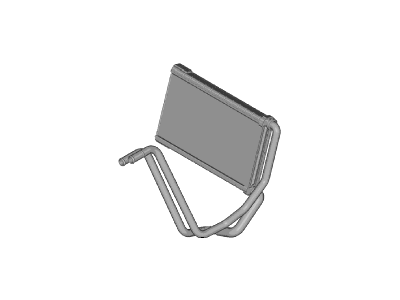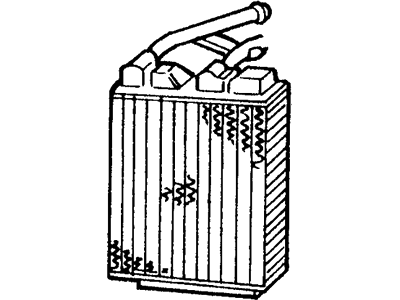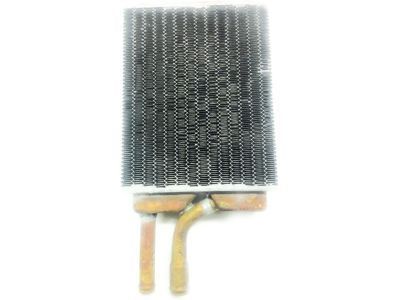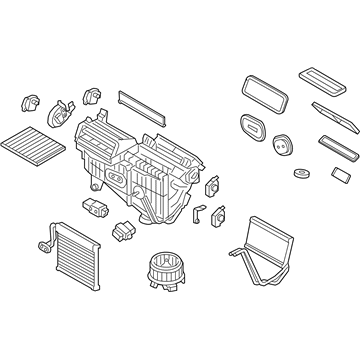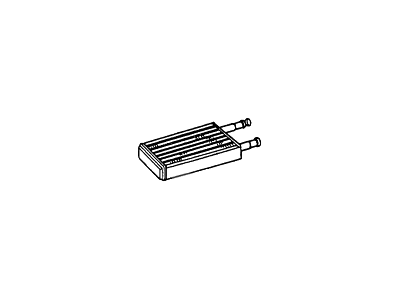×
- Live Chat
- 1-888-788-9341


My Garage
My Account
Cart
Genuine Lincoln Continental Heater Core
HVAC Heater Core- Select Vehicle by Model
- Select Vehicle by VIN
Select Vehicle by Model
orMake
Model
Year
Select Vehicle by VIN
For the most accurate results, select vehicle by your VIN (Vehicle Identification Number).
7 Heater Cores found
Lincoln Continental Radiator And Seal Assembly - Heater
Part Number: DG9Z-18476-A$139.70 MSRP: $230.91You Save: $91.21 (40%)Ships in 1-2 Business DaysLincoln Continental HEATER ASY - LESS RA
Part Number: E6DZ18476A$43.80 MSRP: $59.85You Save: $16.05 (27%)Ships in 1-2 Business DaysLincoln Continental Evaporator And Housing Assembly
Part Number: G3GZ-19B555-Z$884.80 MSRP: $1316.67You Save: $431.87 (33%)
Lincoln Continental Heater Core
Heater Core in Lincoln Continental automobiles is an equipment that is serving basis for the climatic control system and it works like the radiators; the Heater Core receive the excessive heat of the engine for warming the conditioned air inside the car. Known as aluminum or brass with fins to maximize the surface, the core takes hot coolant from the engine and with the help of the vehicle's fan, air is blown over the core to provide heat inside the car. Depending on the type of Heater Cores, they may include temperature control with different items, such as valves or doors, while complex systems may include electromechanical actuators and thermistors for increased comfort. In vehicles with air conditioning, the heater core also assists in the dehumidifying process on air that is already cooled, and may actually double as a secondary radiator, for the cooling of the engine. However, problems including clogging, leaking, and corrosion are frequently conflicting because, for instances, gaining access to the heater core demands dismantling much of the dashboard, hence expensive to repair.
We provide a wide range of Lincoln Continental Heater Core at the best prices possible. If you need Lincoln Continental Heater Core, you can shop with confidence on our website. All our OEM parts come with a manufacturer's warranty and are delivered to your door step with a fast delivery service.
Lincoln Continental Heater Core Parts Questions & Experts Answers
- Q: How to remove and replace the heater core in Lincoln Continental?A: The following procedures involve the removal of several interior trim parts. In the case of 1981 and later Town Car models, the entire instrument panel must be removed or pulled back to access the heater assembly. To begin, disconnect the cable from the negative battery terminal and drain the cooling system, then disconnect the heater hoses from the heater core inlet and outlet tubes, and plug the heater core tubes to prevent coolant spillage. Remove the nuts holding the left end of the plenum to the firewall and the nut holding the upper left side corner of the evaporator case to the firewall. Disconnect the vacuum supply hoses from the vacuum source and push the grommet and vacuum supply hose into the passenger compartment. Proceed to remove various instrument panel trim components, steering column covers, cowl trim panels, defroster grille, and cross body brace to gain access to the heater core. Disconnect the wiring harness, vacuum hoses, and other components connected to the plenum assembly. Carefully move the plenum to allow clearance for the heater core tubes and the stud at the top of the plenum, and remove the plenum by rotating it from behind the instrument panel. To replace the heater core, follow the reverse procedure of removal. For 1982 through 1987 Continental and 1984 through 1992 Mark VII models, the process is similar. Additionally, if the vehicle has air conditioning, the refrigerant gas must be discharged, and the refrigerant lines going through the firewall need to be disconnected. For 1973 through 1979 Continental and Mark series, the heater core can be removed without discharging the air conditioning system. Drain the cooling system, disconnect the heater hoses from the heater core tubes, and remove the heater core cover to access the core. For 1970 through 1972 Continental and Mark series, disconnect the battery cable, drain the cooling system, and follow a detailed removal procedure to access and remove the heater core. Installation steps for each procedure should be carried out in reverse order.
Related Lincoln Continental Parts
Browse by Year
2020 Heater Core 2019 Heater Core 2018 Heater Core 2017 Heater Core 2002 Heater Core 2001 Heater Core 2000 Heater Core 1999 Heater Core 1998 Heater Core 1997 Heater Core 1996 Heater Core 1995 Heater Core 1994 Heater Core 1993 Heater Core 1992 Heater Core 1991 Heater Core 1990 Heater Core 1989 Heater Core 1988 Heater Core 1987 Heater Core 1986 Heater Core 1985 Heater Core 1984 Heater Core 1983 Heater Core 1982 Heater Core
